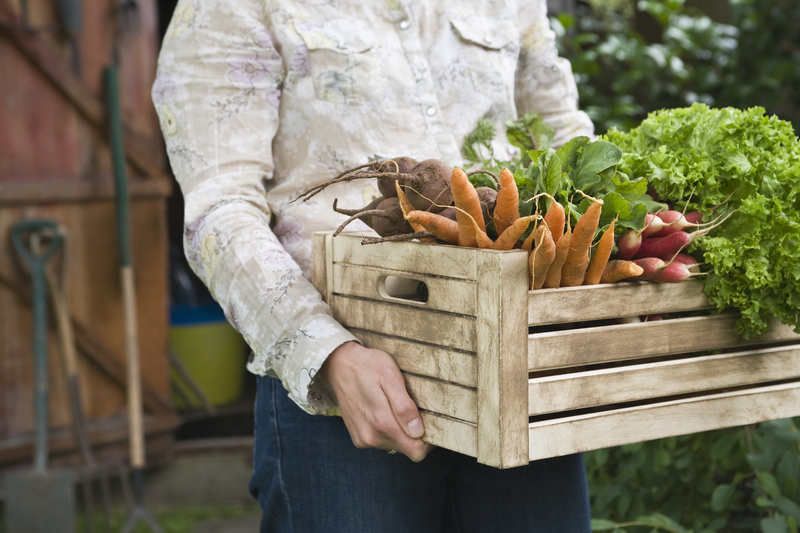Winterize Your Lawn Equipment: A Step-by-Step Guide
Posted on 09/11/2024
As the chilly winds of winter approach, it's crucial to prepare your lawn equipment for the dormant season. Properly winterizing your tools ensures they remain in peak condition, ready to perform come spring. This guide will walk you through the essential steps to winterize various lawn equipment types efficiently.
Step 1: Clean Your Equipment
Before stowing away your lawn equipment, give it a thorough cleaning. Dirt, grass clippings, and other debris can cause rust and damage if left unchecked over the winter months.
Tips:
- Use a hose and scrub brush for larger equipment.
- Clean small tools with a wire brush and soapy water.
- Dry thoroughly to prevent rust.

Step 2: Check and Change Oil
Lubrication is essential to maintain the engine's health. Changing the oil before storage removes contaminants and ensures that your equipment is lubricated and protected.
Tips:
- Refer to the user manual for oil specifications.
- Dispose of used oil responsibly at a recycling center.
Step 3: Drain or Stabilize the Fuel
Fuel left in the engine can degrade and cause blockages. You have two main options: drain the fuel or add a stabilizer.
Tips:
- For gasoline engines, add a fuel stabilizer to a full tank and run the engine for a few minutes.
- Drain fuel completely from engines that will not be used for several months.
Step 4: Spark Plug Maintenance
Inspect and replace old spark plugs to ensure that your lawn equipment starts easily next season. This is also a good opportunity to check other ignitions and electrical systems for signs of wear.
Tips:
- Use a spark plug wrench for easy removal.
- Set the spark plug gap according to manufacturer instructions.
Step 5: Inspect Belts and Blades
Cracks, tears, and dullness in belts and blades can affect performance. Inspect these components and replace them if needed.
Tips:
- Sharpen blades if they appear dull.
- Check belt tension and replace worn-out belts to avoid future hassle.
Step 6: Battery Care
For equipment with batteries, it's important to store them in a dry, cool place. Disconnect batteries from the machine to prevent discharge.
Tips:
- Clean battery terminals with a mixture of baking soda and water.
- Store batteries on a wooden shelf, not concrete.
Step 7: Store Properly
Store your equipment in a sheltered place like a garage or shed to shield it from the elements. Use covers for additional protection.
Tips:
- Elevate tools off the ground to avoid moisture damage.
- Use protective cases for small hand tools.
Pros and Cons of Winterizing Lawn Equipment
Pros:
- Extends the life of your lawn equipment.
- Reduces the likelihood of malfunction and costly repairs.
- Ensures readiness for the next gardening season.
Cons:
- Requires a significant time investment.
- May entail costs for new oil, stabilizer, and replacement parts.
Tips for Efficient Winterization
- Schedule a specific date each year for winterization tasks to form a habit.
- Keep a checklist to ensure no step is overlooked.
- Involve family members to make the process quicker and more efficient.

Takeaways
1. Clean thoroughly: Remove all debris and dry equipment to prevent rust.
2. Change oil: Fresh oil keeps the engine components in good condition.
3. Fuel management: Drain or stabilize fuel to avoid clogs and degradation.
4. Inspect components: Check and maintain spark plugs, belts, and blades.
5. Proper storage: Store equipment in a dry, protected area to extend longevity.
Conclusion
Winterizing your lawn equipment is a necessary task that pays dividends by extending the life of your tools and ensuring optimal performance when spring arrives. Following these detailed steps and tips helps you avoid fundamental errors and maintain your equipment in top-notch condition. With some time and effort invested in these tasks, you can enjoy a hassle-free start to your gardening activities next year. Winterizing isn't just maintenance; it's an investment in the longevity and reliability of your lawn care assets. Start today and prepare for a seamless transition into the next gardening season!




